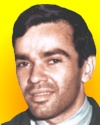 (source)
(source)
|
Martin Kamen
(27 Aug 1913 - 31 Aug 2002)
Canadian-American biochemist who co-discovered (27 Feb 1940) the synthesis of the isotope carbon-14 by bombarding a target of graphite with sub-atomic particles. He worked with Sam Ruben at Berkeley, California.
|
Unlocking the Enigma of Photosynthesis with Radioactive Carbon
The early research of Martin Kamen and Samuel Ruben (1941)
Research published in 1941 cast doubt on longstanding theories about photosynthesis, by employing radioactive carbon-14, in breakthrough experiments at the University of California. The work was conducted by Dr. Samuel Ruben of the Department of Chemistry and Dr. Martin D. Kamen from the Radiation Laboratory.
Carbon-14 atoms were produced using an atom-smashing cyclotron, by bombarding a target of graphite with deuterons (the nuclei of heavy hydrogen, containing a proton and an additional neutron). These radioactive atoms provided a pivotal new technique to explore plant chemistry, powerful enough to challenge existing notions about photosynthesis.
As a result of their studies, a previously unknown compound was identified that carries out what had earlier been thought to be the role of formaldehyde as an intermediary in the process of photosynthesis.
Scientists formerly had hypothesized that during photosynthesis, plants take in carbon dioxide, light, and water, to initially produce formaldehyde. This formaldehyde was then thought to undergo further reactions, driven by chlorophyll, to produce carbohydrates and other essential organic molecules.
However, the new research traced the path of radioactive carbon through the chemical changes during stages of photosynthesis. These experiments showed that formaldehyde did not contain the radioactive carbon—and thus was not the intermediary as once thought. Instead another, as yet unidentified, compound absorbed most of the radioactive carbon, suggesting that this compound might play the role that formaldehyde was initially believed to perform in photosynthesis.
Understanding photosynthesis is at the heart of the broader biological context of animals in the intricate web of life.
All animals, ranging from humans to microscopic organisms, rely on plants’ remarkable capability to transform basic inorganic elements into organic forms digestible for animals. Without the intervention of plants, animals would be unable to derive sustenance directly from nature’s primary sources like soil, water, and air. Through a complex chemical process involving chlorophyll, the green pigment in plants, they can transform these essential elements into a range of organic foods, from sugars to vitamins. This transformative process is what we know as photosynthesis.
Scientists have long been perplexed by the intricacies of photosynthesis. Numerous theories have been proposed, but definitive proof remained elusive due to the limitations of chemical investigative methods.
The prevailing belief was that plants, using light, carbon dioxide, and water, first produced formaldehyde, which acted as a preliminary step before chlorophyll initiated the creation of nutrients such as carbohydrates. To test this, Ruben and Kamen introduced algae to an environment rich in radioactive carbon dioxide. As these plants absorbed the radioactive carbon from the air, scientists could trace its path. Contrary to expectations, formaldehyde produced by the plants lacked the radioactive carbon.
Surprisingly, they identified an unforeseen compound that had absorbed most of the radioactive carbon—positioning itself as the real initial phase in photosynthesis. The exact chemical structure of this pivotal compound is still under investigation.
Furthermore, Drs. Ruben and Kamen, with their team debunked the notion that photosynthesis exclusively occurs in the presence of light. Their findings suggested that certain stages of photosynthesis might not be dependent on light, as plants continued to absorb radioactive carbon dioxide even in complete darkness.
Thus, the work by Dr. Ruben and Dr. Kamen has reshaped our understanding of photosynthesis, challenging long-held beliefs and unveiling new avenues for exploration. As we delve deeper into this critical biological process, the broader implications for fields like agriculture and bioenergy become ever more significant. Such discoveries underscore the evolving nature of scientific knowledge and the exciting horizons yet to be explored.
Ref: 'Radioactive Carbon Reveals Secrets of Photosynthesis', The Science News-Letter (25 Oct 1941), 40, No. 17, 268.
- 27 Aug - short biography, births, deaths and events on date of Kamen's birth.
- Hot Carbon: Carbon-14 and a Revolution in Science, by John Marra. - book suggestion.
- Booklist for Carbon.




